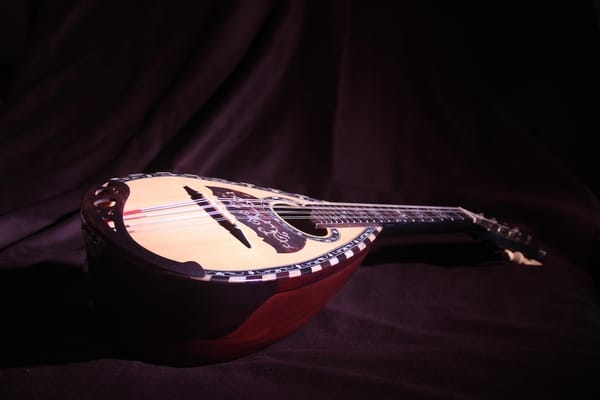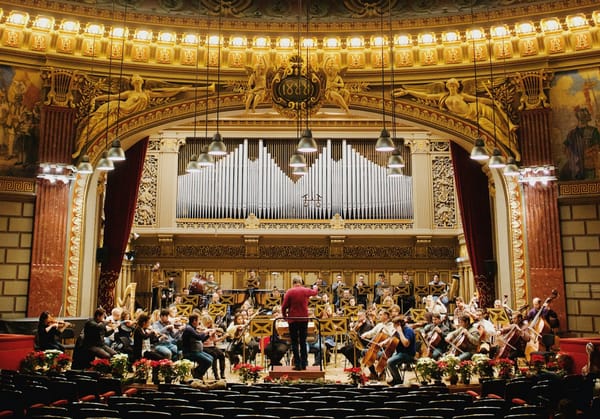Teaching Rhythm and Meter in the Classroom
Teaching rhythm and meter in the classroom builds more than musical skill. It nurtures coordination, creativity, and empathy, helping students connect movement, listening, and expression through practical, cultural, and interdisciplinary approaches to rhythm education.

Music begins with rhythm. Before melody and harmony emerge, rhythm provides the pulse that gives shape and movement to sound. Teaching rhythm and meter in the classroom is therefore not simply a technical exercise; it is a way of nurturing musical awareness, coordination, and creativity in students of all ages. Yet rhythm is often misunderstood or oversimplified in school settings, reduced to clapping patterns or counting beats. Effective rhythm instruction must move beyond rote repetition and cultivate a deeper sense of pulse, timing, and ensemble sensitivity.
This article explores practical and philosophical approaches to teaching rhythm and meter, bridging traditional pedagogy with contemporary strategies that engage both the body and mind.
1. Rhythm as a Universal Language
Every culture on earth has developed its own rhythmic traditions. From the intricate tala cycles of Indian classical music to the syncopated swing of jazz and the steady beat of a marching band, rhythm reflects how societies move and feel. Introducing students to this universality can help them perceive rhythm not as a fixed formula but as a form of human expression.
Teachers might begin with body percussion or everyday sounds such as footsteps, clapping, and speech rhythms to demonstrate that rhythm is innate. Encouraging students to listen to the rhythm of spoken language, for example, makes a compelling link between music and literacy. Poetic meter and musical meter share more than terminology; both involve an awareness of time, stress, and flow. A short exercise comparing the rhythm of a Shakespearean sonnet to a 4/4 rock groove can spark lively discussion and creative experimentation.
2. Establishing the Pulse
Before tackling meter, students must internalise a steady pulse. The pulse is not the same as rhythm; it is the constant underlying beat over which rhythms are layered. Many children struggle with maintaining a consistent pulse, particularly in group settings. Teachers can use a variety of activities to reinforce this foundation.
Movement exercises are particularly effective. Walking, marching, or swaying in time to music engages kinesthetic learning and helps students feel rhythm rather than merely think it. Kodály and Dalcroze methods emphasise this connection between movement and music, encouraging learners to embody the beat before notating or analysing it.
Another approach is to alternate between sound and silence. Have students clap along to a steady beat, then continue “clapping in their heads” while the teacher stops the sound. When the teacher resumes playing, the class should still be aligned with the pulse. This simple game develops both temporal memory and ensemble awareness.
3. Introducing Meter
Once a pulse is established, the next step is to introduce meter, the organisation of beats into regular groupings. Students can initially explore duple and triple meters through familiar songs or dances. For younger learners, visual aids such as shapes or coloured blocks can represent strong and weak beats. Older students may enjoy exploring how meter shapes perception, noticing how a 6/8 jig feels different from a 3/4 waltz even though both involve groupings of three.
A multisensory approach can help here. Use a large drum or bass instrument to accentuate the downbeat while students respond with lighter taps on the secondary beats. Encouraging them to count aloud—“ONE two three, ONE two three”—links physical motion with auditory perception and numerical structure.
Teachers can gradually introduce irregular and compound meters such as 5/8 or 7/4 by connecting them to real-world examples. Students often find these fascinating once they understand that many global musical traditions, from Balkan folk to Indian classical compositions, employ such meters naturally. Playing recordings or inviting a guest percussionist can make this exploration vivid and memorable.
4. Teaching Rhythm Reading and Notation
Rhythm literacy, or the ability to read and write rhythmic notation, is best developed once students have internalised patterns aurally and physically. A common pitfall is to start too early with notation, leading to mechanical learning. Instead, teachers can employ a sound-before-symbol approach.
Begin with call-and-response exercises where the teacher claps a rhythm and students echo it back. Gradually, students can learn to associate these patterns with notation. Using rhythmic syllables, such as the Kodály system (“ta,” “ti-ti,” and so on), provides an accessible bridge between sound and symbol.
Another effective method is graphic notation, where students invent their own symbols for short rhythmic ideas. This empowers creativity and demystifies the formal system. When they later encounter standard notation, they will understand that it is simply one of many ways to represent sound.
5. Ensemble Work and Polyrhythms
Group rhythm exercises build listening skills and cooperation. One technique is to divide the class into sections, each performing a different rhythm within the same meter. For example, one group maintains the steady beat, another claps a syncopated rhythm, and a third adds an off-beat pattern. As the textures combine, students experience polyrhythm, the coexistence of contrasting rhythms.
These exercises can be both challenging and exhilarating. They develop independence, concentration, and ensemble sensitivity. Moreover, they highlight how rhythm functions in real musical contexts as a web of interlocking parts rather than a single repeated figure.
Teachers might also connect these ideas to cultural exploration. African drumming traditions, for instance, offer excellent examples of layered rhythm. Students can learn simple call-and-response patterns on classroom percussion instruments, gaining insight into how rhythm drives communication and community in non-Western settings.
6. Technology and Rhythm Training
Digital tools can enhance rhythm instruction, especially when used thoughtfully. Metronome apps, rhythm trainers, and loop-based software allow students to visualise and manipulate patterns. Programs such as GarageBand or Groove Pizza enable learners to compose rhythmic loops, experiment with layering, and analyse groove structures in pop and electronic music.
However, technology should supplement rather than replace embodied learning. Overreliance on visual grids or quantisation can make rhythm feel mechanical. The goal is to balance precision with human feel, encouraging students to explore both strict tempo and expressive timing. Recording their own performances and comparing them with a click track can be a powerful self-assessment tool.
7. Assessment and Creativity
Assessing rhythm skills can be tricky, as musical timing is often subjective. Rather than focusing solely on technical accuracy, teachers should consider musicality, responsiveness, and improvement. Short improvisation tasks, such as creating an eight-beat rhythm using body percussion, allow students to demonstrate understanding creatively.
Pair or group projects—composing rhythmic ostinatos, layering grooves, or performing rhythmic poetry—encourage collaboration and apply learning in real contexts. Recording performances can also create a portfolio of progress over time.
Ultimately, the most meaningful assessment is whether students can feel and express rhythm confidently. When they can move, listen, and create with awareness of time and pulse, they have achieved a lasting musical skill.
8. The Emotional and Cognitive Benefits
Teaching rhythm is not merely about training musicians; it contributes to broader developmental goals. Studies in music education and neuroscience reveal that rhythmic training enhances concentration, memory, coordination, and language skills. Group rhythm activities also promote empathy and cooperation as students learn to listen and adjust to others.
The psychological benefits are equally profound. Rhythm connects students to their own bodies, reduces anxiety, and fosters a sense of belonging through shared movement. In a world where many children are increasingly detached from physical experience, rhythmic learning offers a grounding, joyful antidote.
9. Rhythm Beyond the Classroom
Encouraging students to observe rhythm in daily life—heartbeat, breathing, walking, even traffic—helps them see music as part of a larger continuum of natural motion. Field assignments, like recording ambient sounds and identifying rhythmic patterns, bridge the gap between art and environment.
Teachers can also integrate rhythm with other subjects: mathematical fractions in note values, poetry in rhythm of speech, or dance in physical expression. Such interdisciplinary connections enrich understanding and sustain interest across disciplines.





